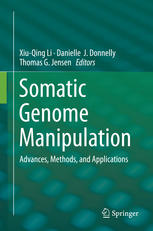

Most ebook files are in PDF format, so you can easily read them using various software such as Foxit Reader or directly on the Google Chrome browser.
Some ebook files are released by publishers in other formats such as .awz, .mobi, .epub, .fb2, etc. You may need to install specific software to read these formats on mobile/PC, such as Calibre.
Please read the tutorial at this link: https://ebookbell.com/faq
We offer FREE conversion to the popular formats you request; however, this may take some time. Therefore, right after payment, please email us, and we will try to provide the service as quickly as possible.
For some exceptional file formats or broken links (if any), please refrain from opening any disputes. Instead, email us first, and we will try to assist within a maximum of 6 hours.
EbookBell Team

4.1
20 reviewsSomatic genome manipulation is required when a sexual crossing approach cannot be used in breeding or genetic treatment of an individual organism. Examples can include gene- or cell-therapy of a person to correct disease, genetic improvement of vegetatively propagated plants, and genetic replacement of cytoplasm without significantly modifying the nuclear genome. The advantage of somatic genome manipulation is maintenance of the general genotype while correcting one or more traits. Somatic genome manipulation is also an option for genetic improvement of sexually propagated plants in polyploidy breeding or in overcoming issues of sexual incompatibility. Recent novel technologies in somatic genome manipulation are developing quickly but much of this literature is fragmented and difficult or inconvenient to access. This book represents the first attempt to assemble updated reviews, detailed protocols, and their applications in all fields in which somatic genome manipulation has thrived. This is a truely one-of-a-kind work that brings together the most important and relevant advances in somatic genome manipulation in plants, algae, microorganisms, humans and animals, and demonstrates where the science interacts and where it diverges. The chapters are written by experts on the topic with ready-to-use protocols that were originally developed or adapted from the literature in their laboratories. We expect that this book will be useful for students, researchers, and teachers in both plant and animal research as a resource for the latest information on somatic genome manipulation and for its useful laboratory methods.